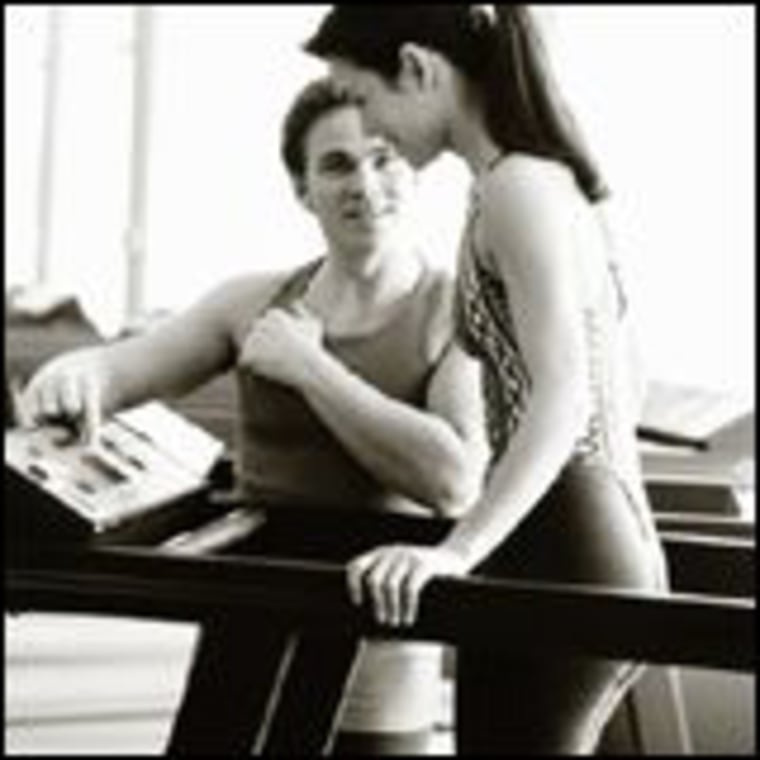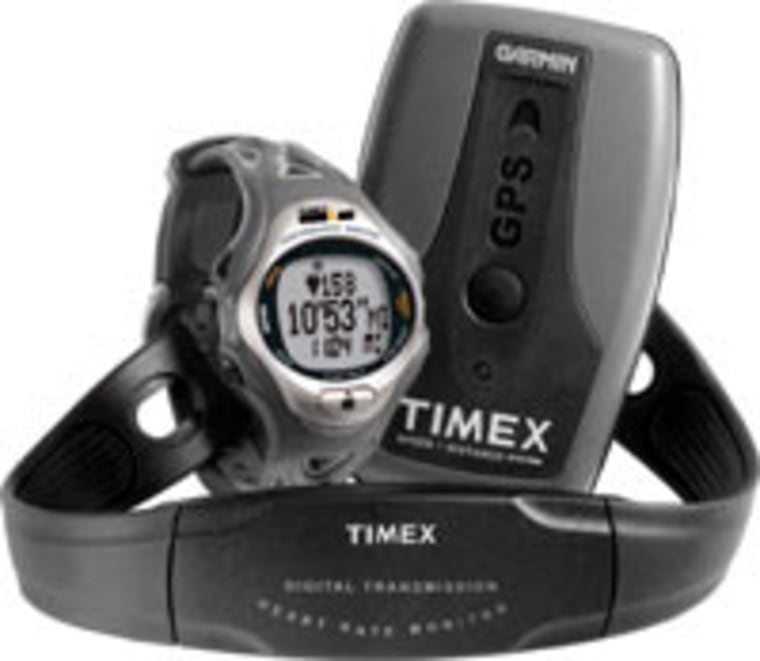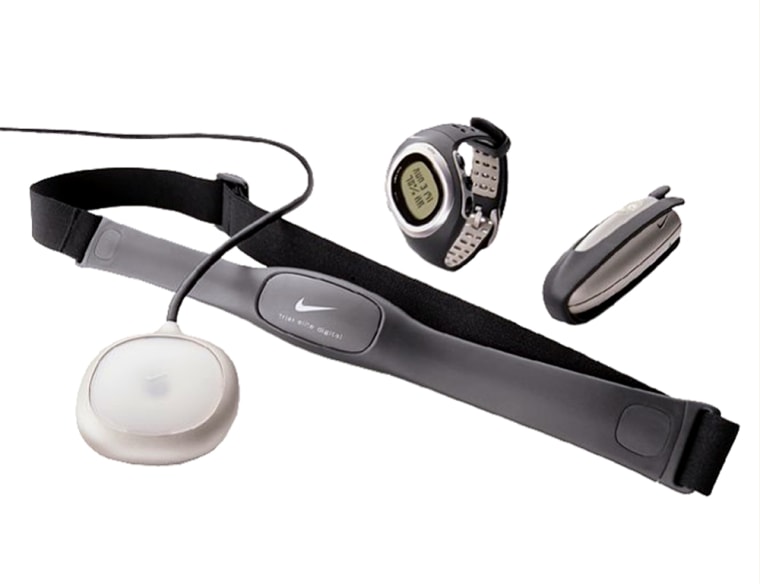It's no secret that athletes and exercise buffs face steep challenges when it comes to monitoring performance and staying motivated. Meeting goals for pumping iron, running or biking is no lightweight task. Too often, there's a fine line between a breakthrough and a break down.
In the past, those looking to stay fit had to rely almost entirely on coaches, books or their bodies to tell them how hard to push and when to back off. But thanks to a new wave of high-tech devices that offer monitoring and performance feedback, ordinary people are reaching new heights with their workouts.
These gadgets, which range from computerized weight-lifting circuits to heart monitors and pace monitors, are changing the face of exercise and ushering in an era of instant feedback, experts say.
"They're providing performance information that wasn't available only a few years ago," says Walt Thompson, a professor of kinesiology and health at Georgia State University.
Of course, no device can transform a casual athlete into a world-class champion. Yet for folks looking to get into better shape or set a personal best in a 10K race, today's high-tech gear can help raise the bar on performance. While these gadgets and gizmos cannot replace a solid exercise regimen and common sense, they can provide a healthy dose of useful information.
Computerized training circuit
One pioneer in the high-tech fitness arena is Fitlinxx, a Stamford, Conn. firm that offers a computerized training circuit popular at YMCAs, health clubs, military bases and rehab facilities.
The Fitlinxx system lets you establish a customized exercise program that includes cardio and weights. All the exercise machines are part of a computer network. So after an initial consultation, a trainer enters your profile into the computer, telling it which exercises you should be doing as part of your fitness plan. Then you simply punch in your PIN at each of the machines, which feed your workout data into a computer that logs and analyzes your performance.

When you pump iron, for example, Fitlinxx tracks range of motion, speed and other factors and provides immediate feedback through audible beeps and data on a touch-screen LCD attached to each machine. If you go too fast it tells you to slow down. If you're unable to complete a set, the system prompts you to lower the weights the next time around. If, on the other hand, you blast through your goal, it asks you if you'd like to increase the load during your next workout.
The story is the same when you step on a treadmill or exercise bike. Fitlinxx records your workout data and sends it to your personal workout log. What's more, you're able to manually add data about dozens of other activities, including running, walking, gardening, karate, swimming and dancing. At any time, you can view your detailed performance data and accumulated points on a kiosk at the gym or through the Web. Fitlinxx claims a 35 percent higher retention rate than conventional weight machines.
"It's a way for people to get motivated and adhere to an exercise routine," explains Michael Spezzano, a national health and fitness consultant at the YMCA of the USA.
Adds Shelly Erickson-Keith, a personal trainer at a YMCA in Burbank, Calif.: "It reduces the intimidation factor and provides individuals, especially those just starting out, with the knowledge that they're using the machines correctly." Points and awards serve as ongoing motivation, she adds.
Performance checks
Fitlinxx isn't the only monitoring system that has hit full stride. Over the last few years, heart rate monitors have become popular among runners and bikers looking to push their performance to the next level. With a strap and sensor around the chest and a watch-like readout on the wrist, $50 to $200 units from the likes of Polar provide instant feedback about the intensity of a workout.

Distance and pace monitors, typically selling for $150 to $300, take the concept even further. For example, the Timex Bodylink system uses a small GPS receiver and heart rate monitor to track speed, distance and exertion levels. Nike's Triax Elite and the FitSense FS-1 body monitoring system offer data about pacing, speed, calories burned and heart rate levels.
For many, it's a leap into the future. The Nike and Fitsense devices use sophisticated accelerometers to measure motion and wireless systems to feed data from a chip worn on the shoe to a watch. Once you have completed your workout you can download the data into software residing on a personal computer or into a Web-based log. At that point, you can view charts, split times and much more.
Although the devices aren't perfect -- they take time to calibrate and require regular battery changes -- they do offer advantages for those engaged in serious training. For example, a runner can cover a new route and a desired distance without getting in the car to clock the mileage. It's also possible to hit specific speed and pace goals and analyze performance data over weeks and months to find out what works.
You still have work to do
Jeff Chandler, editor-in-chief of Strength and Conditioning Journal and chair of the department of exercise science, sport and recreation at Marshall University in Huntington, W.Va., believes that today's sophisticated gadgets offer benefits but weekend warriors and serious athletes alike can become overly reliant on technology.
"No machine does the work for you. Over time, a person has to find a way to stay motivated," he says.
What's more, unchecked use of these devices can lead to overtraining and injury.
"It's important to pay attention to your body," Chandler says. "Those who become overly dependent on equipment can train inappropriately."
Nevertheless, many are finding that today's high-tech gear offers a winning formula.
Samuel Greengard is a freelance writer and marathon runner based in Burbank, Calif. His articles have appeared in Wired, Discover, Home and the Los Angeles Times.
